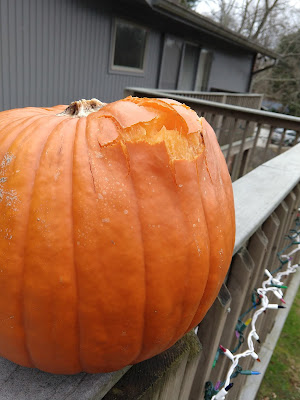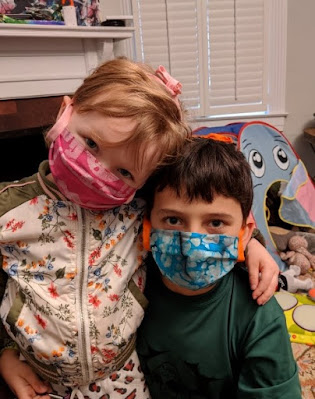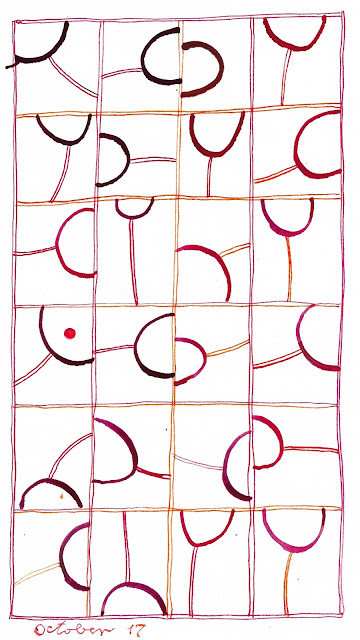Friends, I do a lot for you and ask so little... but every year or so, often at the end of December, I make you read the lecture on daily art. (Like this one, or this one, or this one.....) I give this lecture so often because I feel so strongly that daily art -- committing to some action every day according to the rules set at the start -- can make you a better artist and a happier person.
 |
| 2016 -- daily drawing |
I've found that people respond to the lecture in two ways. One bunch says "OMG, that sounds awful, I could never stick with it, I would get bored doing the same thing every day, I don't know if I could commit to every day, it doesn't sound like fun, it would take too much time, that's just not me." The other bunch says "what a great idea, I'm going to do it!" And as time passes, many from the second bunch report back that indeed, they have greatly enjoyed and benefited from their projects.
 |
| 2018 -- daily map |
Just yesterday I had a phone call from an acquaintance whom I had last seen two years ago, a lovely lunch during which we talked about daily art (she does it too) and I got the inspiration to do my daily miniatures. She wanted to know what I'm going to do for daily art in 2021 and to get my take on her ideas for next year. I'm going to do calligraphy again next year, but right now I want to talk about you, dear friends, and share some of the things we talked about in that phone call.
 |
| 2012 -- daily hand stitching |
New Year's Day is a great time to start a daily art project, but so is January 4 or January 15 or any other day. So don't get started until you have given some thought to your rules: the most important part of the endeavor. If you set rules that are going to be impossible to follow, you will fail. So don't commit to a daily sketch of the majestic oak tree a mile away if your street sometimes gets iced over and impassable. Don't commit to a machine-stitched landscape every day if you're planning a vacation to a tropical island. (As things turned out, I'm kind of sorry I didn't commit to a daily sewing machine project for 2020, since it's been the only year of my adult life where I spent every day in my own house!)
 |
| 2010 -- daily photo |
If you're worried about the project taking too much time, have a 15-minute-only rule. If you are afraid of drawing, start with the smallest sketchbook in the store. You could even have a rule that doesn't require any traditional art-making -- for instance, you could find something tiny and interesting on your daily walk, and take a photo of it, or label it with the date and put it in a box. You could even commit to throwing something out every day (this time it's me saying OMG, that sounds awful).
 |
| 2013 -- daily collage |
Most important, if you don't think you can stick with a project for a whole year, commit to a month and see what happens. Take a cue from the growing popularity of alcohol-free January resolutions or one-month introductory memberships to the fitness club. And if the first month gives you problems, you might want to revise the rules for the second month and give it another try.
 |
| 2020 -- daily calligraphy |
While daily art is fun, that has not been my primary purpose in doing it for 20 years. I do daily art because the structure and discipline of such a project helps me make better art in my other work. And it is immensely satisfying to see the progress that I make from day to day as I explore new twists on what I did last week, try out new tools, riff on familiar themes and discover unexpected things surface from my unconscious.
 |
| 2019 -- daily miniature |
And happy new year, with fervent hopes that it will be much better than this year, for each of us and for the world.












































